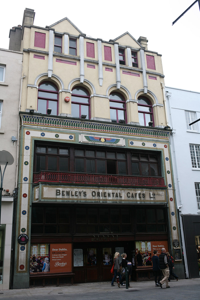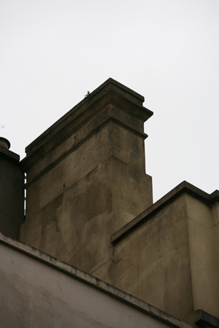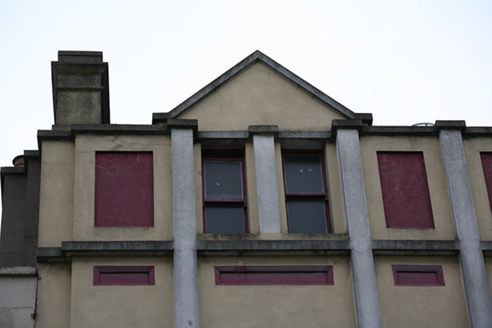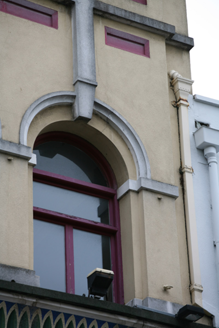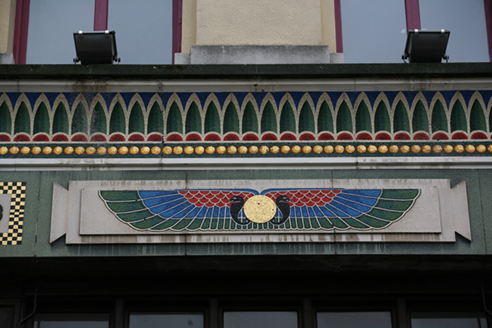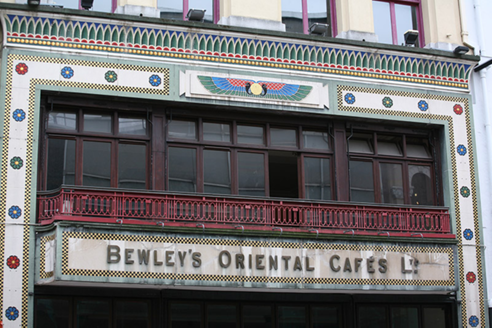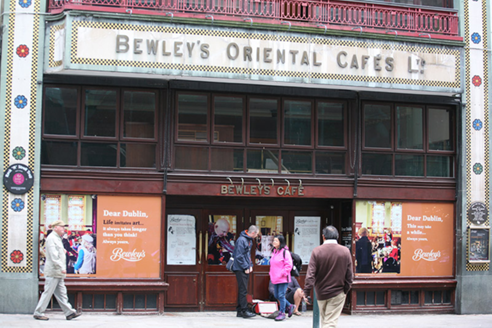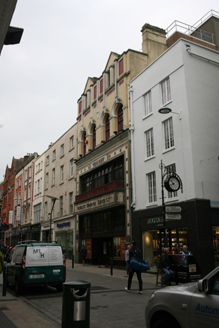Survey Data
Reg No
50920036
Rating
Regional
Categories of Special Interest
Architectural, Artistic
Original Use
Restaurant
Date
1925 - 1930
Coordinates
315922, 233769
Date Recorded
06/10/2015
Date Updated
--/--/--
Description
Attached four-bay four-storey restaurant, built 1926, with double-height Egyptian Revival mosaic pylon-style shopfront. Single-pitch slate roof to front with set-back two-tier attic extension to west having flat roofs. East roof set behind parapet wall with concrete coping and two gabled pediments over third floor windows rising above parapet. Profiled rendered chimneystacks to north and south party walls, parapet gutters with cast-iron box hopper and box downpipe breaking through façade to north end. Rendered walls to upper two floors with recessed flat panels and vertical mouldings extending from keystones of second floor openings. Paired square-headed window openings to third floor having one-over-one timber sash windows. Round-headed window openings to second floor with continuous impost and paviors with replacement timber casement windows. Full-span square-headed window openings to shopfront with hardwood casement windows. Terrazzo and mosaic shopfront surround (pylon) with cavetto cornice and panel below with winged solar globe. First floor windows open onto full-span balcony with geometric iron balustrade and projecting mosaic and terrazzo balcony having applied brass lettering; ‘Bewley’s Oriental Cafes Ltd.’. Glazed hardwood shopfront incorporating mezzanine level spans ground floor with mosaic tiled threshold. Street fronted on west side of Grafton Street. Seven-bay three-storey elevation on Johnson’s Court, having pylon-style Egyptian Revival entrance shopfront and stained glass windows to upper floors.
Appraisal
Built to designs by Millar and Symes, the extravagant façade, rising above the neighbouring properties, is a rare example of the Egyptian Revival style in Ireland. The building retains much of its early twentieth-century character and houses some exceptional stained glass (1928) by Harry Clarke. A landmark building and a much-loved institution.

